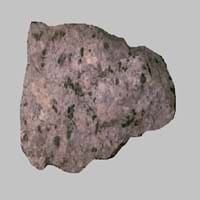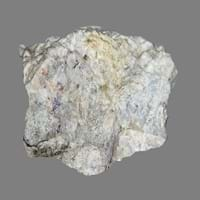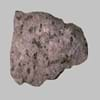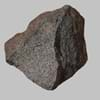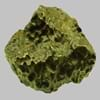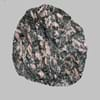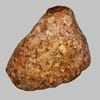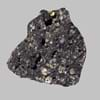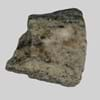Definition
Adamellite is a coarse-grained porphyritic igneous rock, a variety of Monzogranite and dominated by phenocrysts of orthoclase in a granular groundmass of perthite, plagioclase and quartz
Skarns are formed during regional or contact metamorphism and from a variety of metasomatic processes involving fluids of magmatic, metamorphic, and/or marine origin
Origin
Italy
USA, Australia
Discoverer
Unknown
Tornebohm
Etymology
From German adamellit and from Monte Adamello, a mountain in Italy, its locality
From an old Swedish mining term originally used to describe a type of silicate gangue or waste rock.
Class
Igneous Rocks
Metamorphic Rocks
Sub-Class
Durable Rock, Hard Rock
Durable Rock, Hard Rock
Group
Plutonic
Not Applicable
Other Categories
Coarse Grained Rock, Opaque Rock
Fine Grained Rock, Opaque Rock
Texture
Porphyritic
Earthy, Mud-rich, Rough
Color
Black, Grey, Orange, Pink, White
Black, Brown, Colourless, Green, Grey, White
Durability
Durable
Durable
Scratch Resistant
Yes
Yes
Appearance
Veined or Pebbled
Dull
Interior Uses
Bathrooms, Countertops, Decorative Aggregates, Entryways, Floor Tiles, Homes, Hotels, Kitchens, Stair Treads
Decorative Aggregates, Entryways, Interior Decoration
Exterior Uses
As Building Stone, As Facing Stone, Bridges, Paving Stone, Near Swimming Pools, Office Buildings, Resorts
As Building Stone, As Facing Stone, Garden Decoration, Paving Stone
Other Architectural Uses
Curbing
Curbing
Construction Industry
As Dimension Stone
As a Flux in the Production of Steel and Pig Iron, As a Sintering Agent in Steel Industry to process Iron Ore, As Dimension Stone, Gold and Silver production, Manufacture of Magnesium and Dolomite Refractories
Medical Industry
Not Yet Used
Not Applicable
Antiquity Uses
Artifacts, Monuments, Sculpture, Small Figurines
Artifacts, Monuments, Sculpture
Commercial Uses
Curling, Gemstone, Laboratory bench tops, Tombstones
Creating Artwork, Gemstone, Jewelry, Metallurgical Flux, Source of Magnesia (MgO)
Types
Not Available
Endoskarns
Features
Available in Lots of Colors and Patterns, It is One of the Oldest, Strongest and Hardest Rock
Host Rock for Lead, Zinc and Copper Deposits
Archaeological Significance
Famous Monuments
Data Not Available
Data Not Available
Famous Sculptures
Data Not Available
Data Not Available
Pictographs
Not Used
Not Used
Petroglyphs
Not Used
Not Used
Formation
Adamellite is a type of Igneous rock which is formed through the cooling and solidification of lava or magma and is a variety of Monzogranite.
Due to change in environmental conditions, rocks are heated and pressurized deep inside the Earth's surface. Skarn is formed from the extreme heat caused by magma or by the intense collisions and friction of tectonic plates.
Mineral Content
Apatite, Biotite, Chlorite, Orthoclase, Perthite, Plagioclase, Quartz, Titanite, Zircon
Calcite, Enstatite, Epidote, Garnet, Magnetite, Pyroxene, Titanite
Compound Content
Aluminium Oxide, CaO, Iron(III) Oxide, FeO, Potassium Oxide, MgO, MnO, Sodium Oxide, Phosphorus Pentoxide, Silicon Dioxide, Titanium Dioxide
Au, CaO, Carbon Dioxide, Cu, Fe, MgO
Types of Metamorphism
Burial Metamorphism, Contact Metamorphism, Hydrothermal Metamorphism, Impact Metamorphism, Regional Metamorphism
Burial Metamorphism, Cataclastic Metamorphism, Contact Metamorphism, Hydrothermal Metamorphism, Impact Metamorphism, Regional Metamorphism
Types of Weathering
Biological Weathering
Not Applicable
Types of Erosion
Chemical Erosion, Glacier Erosion, Wind Erosion
Not Applicable
Grain Size
Coarse Grained
Fine Grained
Fracture
Not Available
Irregular
Streak
White
Light to dark brown
Porosity
Less Porous
Less Porous
Luster
Dull to Grainy with Sporadic parts Pearly and Vitreous
Waxy and Dull
Compressive Strength
Not Available
Cleavage
Not Available
Slaty
Toughness
Not Available
2.4
Specific Gravity
2.6-2.7
2.86
Transparency
Opaque
Opaque
Density
2.6-2.8 g/cm3
2.8-2.9 g/cm3
Resistance
Heat Resistant, Wear Resistant
Heat Resistant
Deposits in Eastern Continents
Asia
China, India, Iran, Saudi Arabia, Sri Lanka, Taiwan, Thailand, Turkey, Vietnam
China, India, Russia, Saudi Arabia, South Korea, Sri Lanka
Africa
Angola, Egypt, Madagascar, Namibia, Nigeria, South Africa
South Africa, Western Africa
Europe
Austria, Belgium, Finland, France, Germany, Italy, Norway, Sardinia, Spain, Switzerland, The Czech Republic, Venezuela
United Kingdom
Others
Not Yet Found
Not Yet Found
Deposits in Western Continents
North America
Canada, USA
Canada
South America
Not Yet Found
Brazil, Colombia, Paraguay
Deposits in Oceania Continent
Australia
Not Yet Found
Central Australia, Western Australia
All about Adamellite and Skarn Properties
Know all about Adamellite and Skarn properties here. All properties of rocks are important as they define the type of rock and its application. Adamellite belongs to Igneous Rocks while Skarn belongs to Metamorphic Rocks.Texture of Adamellite is Porphyritic whereas that of Skarn is Earthy, Mud-rich, Rough. Adamellite appears Veined or Pebbled and Skarn appears Dull. The luster of Adamellite is dull to grainy with sporadic parts pearly and vitreous while that of Skarn is waxy and dull. Adamellite is available in black, grey, orange, pink, white colors whereas Skarn is available in black, brown, colourless, green, grey, white colors. The commercial uses of Adamellite are curling, gemstone, laboratory bench tops, tombstones and that of Skarn are creating artwork, gemstone, jewelry, metallurgical flux, source of magnesia (mgo).
